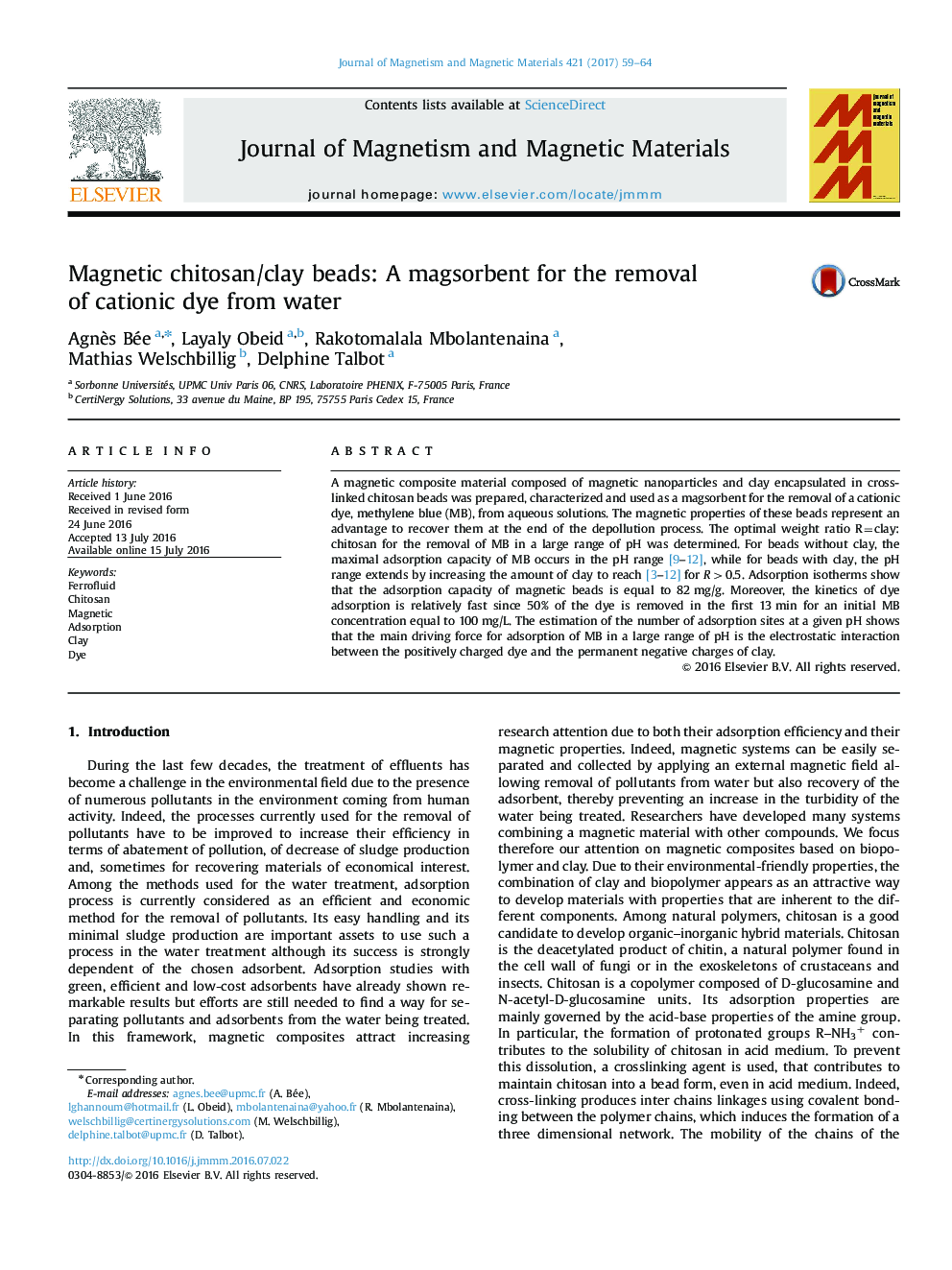| Article ID | Journal | Published Year | Pages | File Type |
|---|---|---|---|---|
| 1797633 | Journal of Magnetism and Magnetic Materials | 2017 | 6 Pages |
•A magsorbent based on magnetic nanoparticles and clay encapsulated in chitosan beads was prepared and characterized.•Clay played significant role for the removal of a cationic dye.•The magnetic beads exhibit a maximum adsorption capacity of 82 mg/g for methylene blue.•The pH range of the maximum adsorption extends from [9], [10], [11] and [12] to [3], [4], [5], [6], [7], [8], [9], [10], [11] and [12] by increasing the amount of clay.•The magsorbent could be magnetically removed from solution.
A magnetic composite material composed of magnetic nanoparticles and clay encapsulated in cross-linked chitosan beads was prepared, characterized and used as a magsorbent for the removal of a cationic dye, methylene blue (MB), from aqueous solutions. The magnetic properties of these beads represent an advantage to recover them at the end of the depollution process. The optimal weight ratio R=clay:chitosan for the removal of MB in a large range of pH was determined. For beads without clay, the maximal adsorption capacity of MB occurs in the pH range [9], [10], [11] and [12], while for beads with clay, the pH range extends by increasing the amount of clay to reach [3], [4], [5], [6], [7], [8], [9], [10], [11] and [12] for R>0.5. Adsorption isotherms show that the adsorption capacity of magnetic beads is equal to 82 mg/g. Moreover, the kinetics of dye adsorption is relatively fast since 50% of the dye is removed in the first 13 min for an initial MB concentration equal to 100 mg/L. The estimation of the number of adsorption sites at a given pH shows that the main driving force for adsorption of MB in a large range of pH is the electrostatic interaction between the positively charged dye and the permanent negative charges of clay.
Graphical abstractFigure optionsDownload full-size imageDownload as PowerPoint slide
